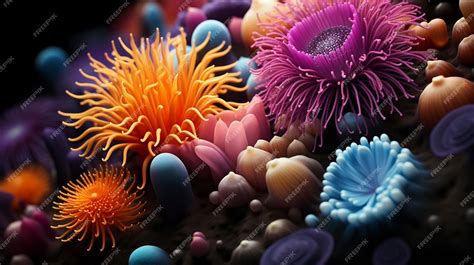What are Bioactive Terrarium Microorganisms?

Bioactive terrariums are self-sustaining ecosystems that recreate natural environments within an enclosure. They utilize a wide array of microorganisms, including bacteria, fungi, and invertebrates, to perform essential functions such as nutrient cycling, waste decomposition, and pathogen suppression.
The Power of Microbiomes
The microbiome of a bioactive terrarium is a complex community that has profound effects on the overall health of the ecosystem. These microorganisms:
- Convert organic matter into nutrients: Beneficial bacteria and fungi decompose plant debris and waste, releasing essential nutrients for plant growth.
- Control pathogens: They produce antimicrobial substances that inhibit the growth of harmful bacteria and fungi, reducing the risk of disease in terrarium inhabitants.
- Maintain soil health: Microorganisms help regulate soil pH, aeration, and moisture levels, creating optimal conditions for plant roots to flourish.
Microorganisms in Action
- Springtails: These tiny insects play a vital role in breaking down decaying plant matter, consuming mold, and aerating the substrate.
- Isopods: Larger crustaceans that shred leaves, consume decaying wood, and help recycle nutrients back into the soil.
- Worms: Earthworms improve soil aeration and drainage, while also consuming organic matter and depositing nutrient-rich castings.
- Bacteria: A vast community of bacteria decompose organic matter, fix nitrogen, and produce beneficial metabolites.
- Fungi: They form symbiotic relationships with plants (mycorrhizae), enhancing nutrient absorption and boosting plant growth.
Transitioning to a Bioactive Terrarium
Converting a conventional terrarium into a bioactive system requires careful planning and attention to detail:
- Choosing the right species: Select microorganisms that are compatible with the terrarium inhabitants and the desired plant life.
- Establishing a substrate: The substrate should provide a moist, nutrient-rich environment for microorganisms to thrive.
- Introducing microorganisms: Inoculate the terrarium with a variety of microorganisms using commercial cultures or collected materials from natural environments.
- Maintaining balance: Monitor the terrarium regularly and make adjustments as needed to ensure the microbiome remains balanced and healthy.
Common Mistakes to Avoid
- Overcrowding: Introducing too many microorganisms can disrupt the ecosystem and lead to competition for resources.
- Using chemicals: Avoid using chemical pesticides or fertilizers, which can harm the beneficial microorganisms.
- Neglecting maintenance: Regular monitoring and cleaning are essential to prevent the accumulation of waste and the proliferation of harmful microorganisms.
Pros and Cons of Bioactive Terrariums
Pros:
- Self-sustaining environment
- Reduced maintenance
- Improved plant health
- Naturalistic appearance
Cons:
- Initial setup can be time-consuming and expensive
- May require more regular monitoring than conventional terrariums
- Not suitable for all terrarium inhabitants
Tips and Tricks
- Use bioactive substrates: Commercial bioactive substrates are available that contain a mix of organic matter, beneficial bacteria, and fungi.
- Introduce microorganisms gradually: Add a few microorganisms at a time to avoid overwhelming the ecosystem.
- Monitor humidity and temperature: These factors play a crucial role in the activity and composition of the microbiome.
- Consider using live plants: Live plants provide food and shelter for microorganisms, further enhancing the ecosystem’s stability.
Reviews
- Positive: “My bioactive terrarium has been thriving for over a year now. The plants are healthy, and I rarely have to clean it.”
- Neutral: “I’m still getting the hang of managing the bioactive terrarium, but I’m seeing positive results in the plant growth.”
- Negative: “I introduced too many microorganisms into my terrarium, and it quickly became overrun with mold. I had to reset the entire system.”
- Expert: “Bioactive terrariums are becoming increasingly popular due to their numerous benefits. However, it’s important to choose the right species and maintain a balanced microbiome to ensure success.”
Emerging Applications
The research on bioactive terrariums is rapidly expanding, leading to innovative applications in diverse fields:
- Ecological restoration: Bioactive microorganisms can be used to restore degraded ecosystems by promoting soil health and vegetation growth.
- Pest control: Beneficial microorganisms can suppress harmful pests in agricultural settings, reducing the need for chemical pesticides.
- Bioremediation: Microorganisms can break down pollutants and heavy metals, cleaning up contaminated environments.
- Cosmetics: Microorganisms are being investigated for their potential in developing natural skincare products that promote skin health.
Conclusion
Bioactive terrarium microorganisms are essential components of self-sustaining ecosystems, providing countless benefits for terrarium inhabitants and the environment alike. With careful planning and maintenance, bioactive terrariums can thrive for years to come, bringing the wonders of nature indoors.





















